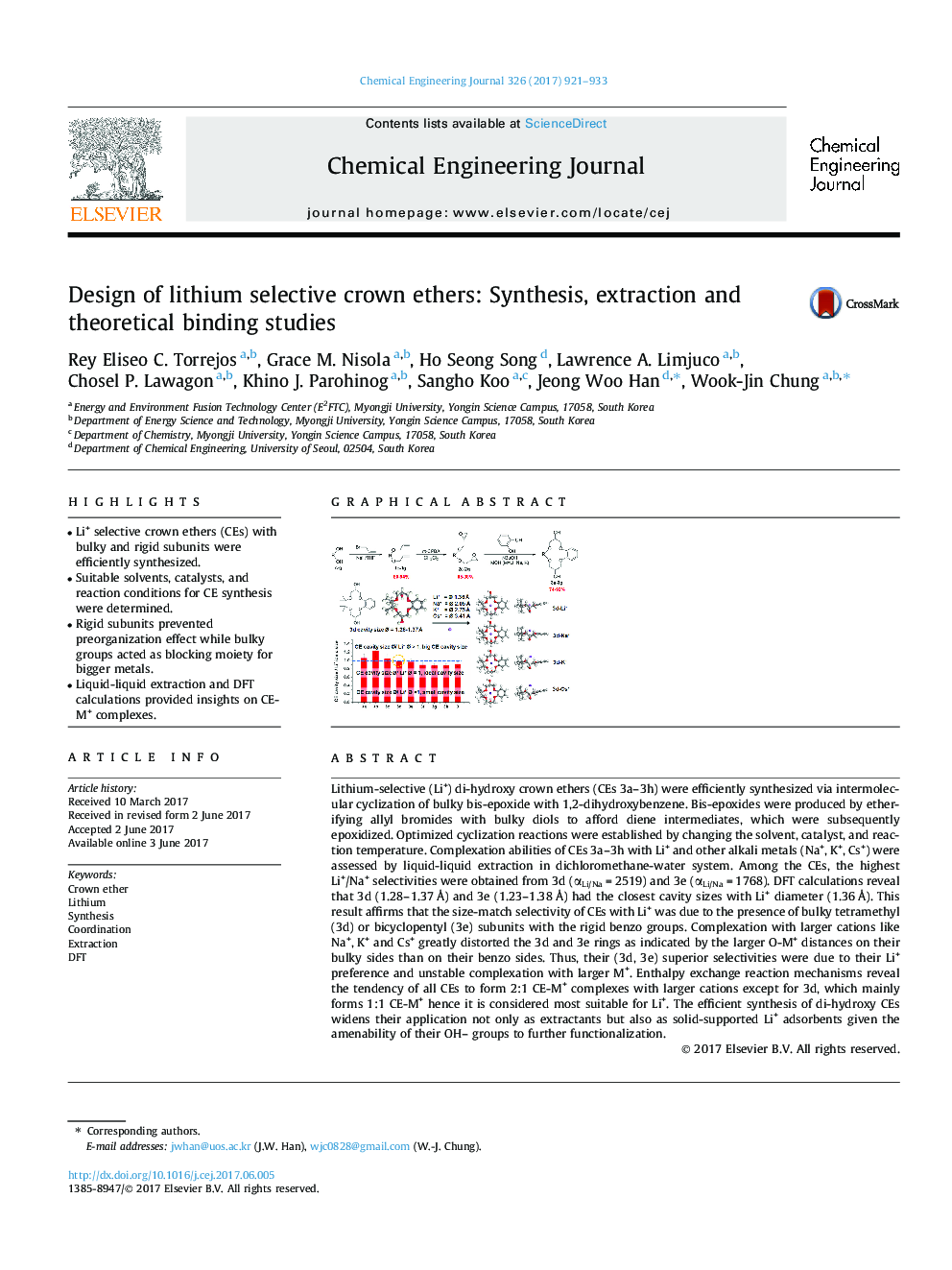| کد مقاله | کد نشریه | سال انتشار | مقاله انگلیسی | نسخه تمام متن |
|---|---|---|---|---|
| 6465527 | 1422952 | 2017 | 13 صفحه PDF | دانلود رایگان |
- Li+ selective crown ethers (CEs) with bulky and rigid subunits were efficiently synthesized.
- Suitable solvents, catalysts, and reaction conditions for CE synthesis were determined.
- Rigid subunits prevented preorganization effect while bulky groups acted as blocking moiety for bigger metals.
- Liquid-liquid extraction and DFT calculations provided insights on CE-M+ complexes.
Lithium-selective (Li+) di-hydroxy crown ethers (CEs 3a-3h) were efficiently synthesized via intermolecular cyclization of bulky bis-epoxide with 1,2-dihydroxybenzene. Bis-epoxides were produced by etherifying allyl bromides with bulky diols to afford diene intermediates, which were subsequently epoxidized. Optimized cyclization reactions were established by changing the solvent, catalyst, and reaction temperature. Complexation abilities of CEs 3a-3h with Li+ and other alkali metals (Na+, K+, Cs+) were assessed by liquid-liquid extraction in dichloromethane-water system. Among the CEs, the highest Li+/Na+ selectivities were obtained from 3d (αLi/Na = 2519) and 3e (αLi/Na = 1768). DFT calculations reveal that 3d (1.28-1.37 à ) and 3e (1.23-1.38 à ) had the closest cavity sizes with Li+ diameter (1.36 à ). This result affirms that the size-match selectivity of CEs with Li+ was due to the presence of bulky tetramethyl (3d) or bicyclopentyl (3e) subunits with the rigid benzo groups. Complexation with larger cations like Na+, K+ and Cs+ greatly distorted the 3d and 3e rings as indicated by the larger O-M+ distances on their bulky sides than on their benzo sides. Thus, their (3d, 3e) superior selectivities were due to their Li+ preference and unstable complexation with larger M+. Enthalpy exchange reaction mechanisms reveal the tendency of all CEs to form 2:1 CE-M+ complexes with larger cations except for 3d, which mainly forms 1:1 CE-M+ hence it is considered most suitable for Li+. The efficient synthesis of di-hydroxy CEs widens their application not only as extractants but also as solid-supported Li+ adsorbents given the amenability of their OH- groups to further functionalization.
94
Journal: Chemical Engineering Journal - Volume 326, 15 October 2017, Pages 921-933
